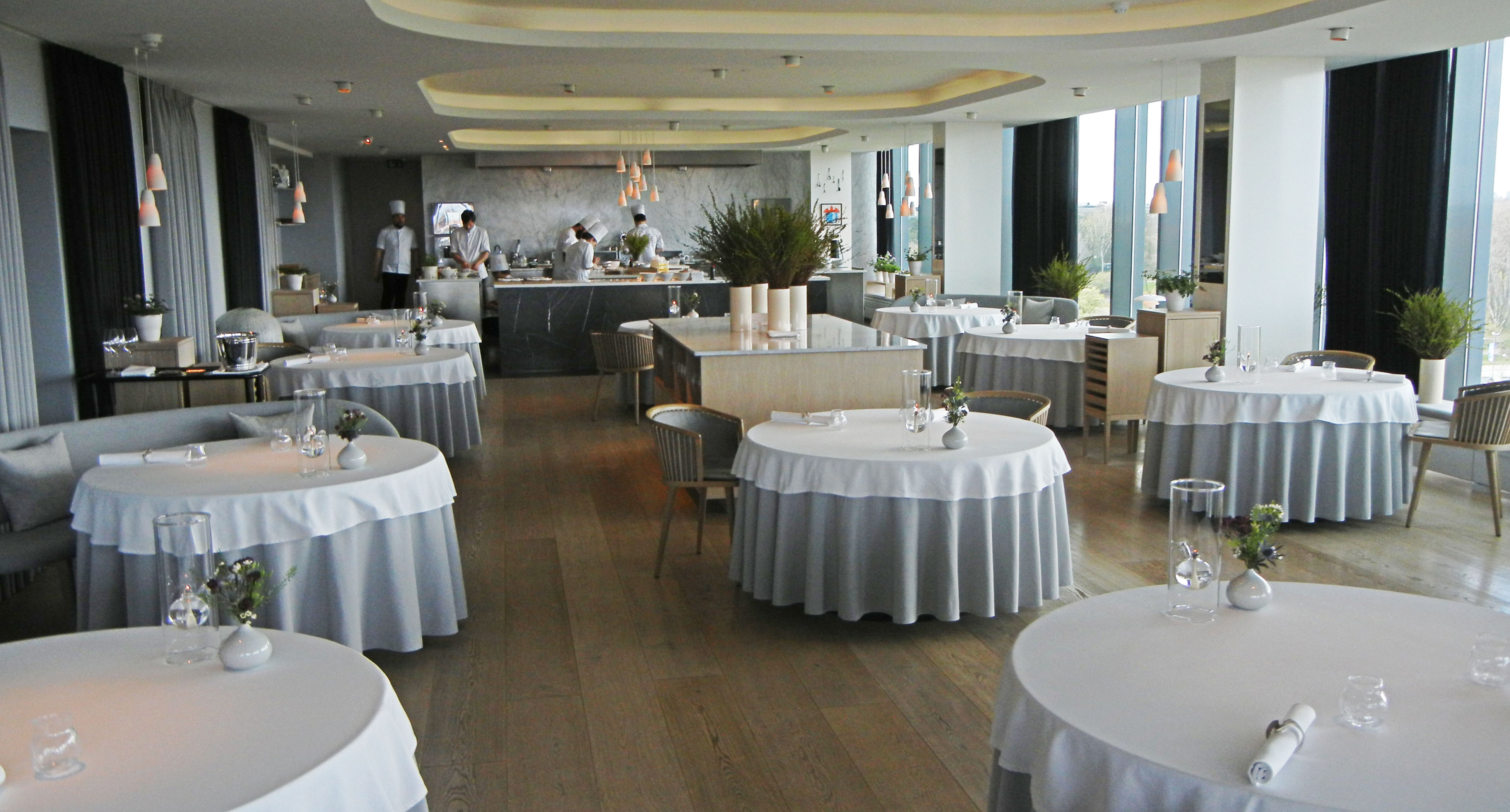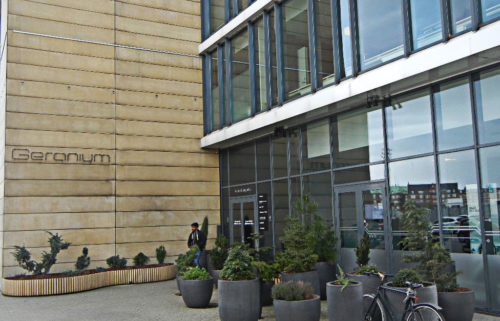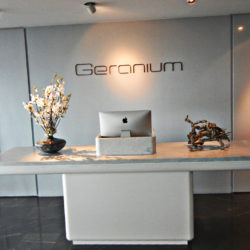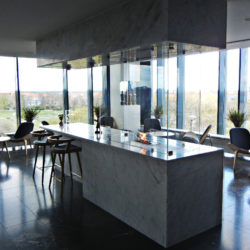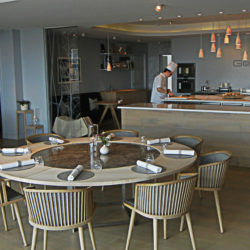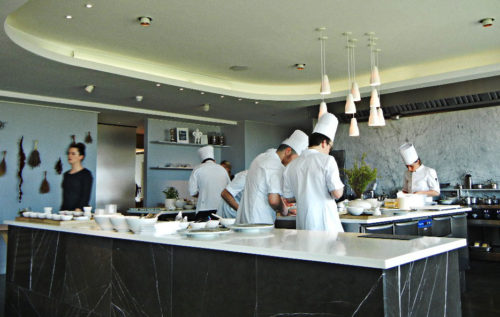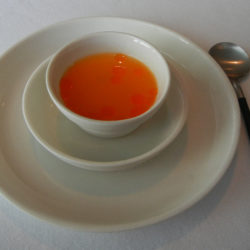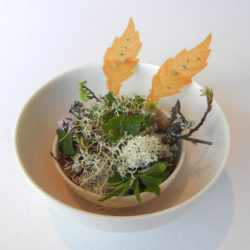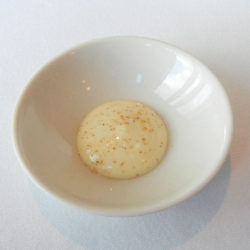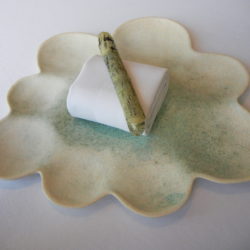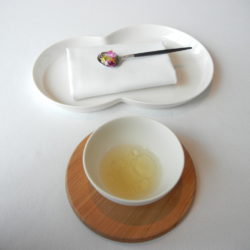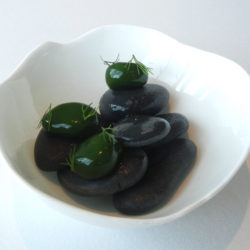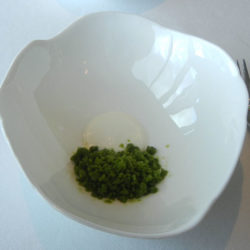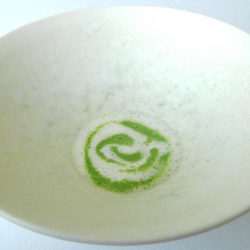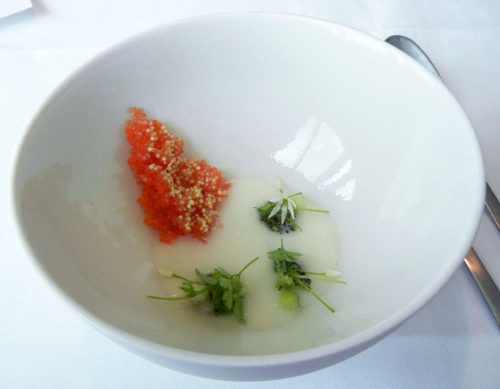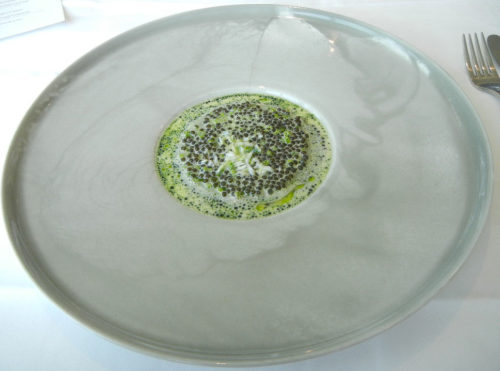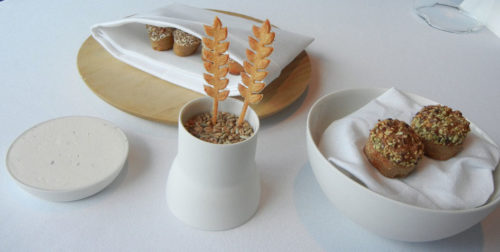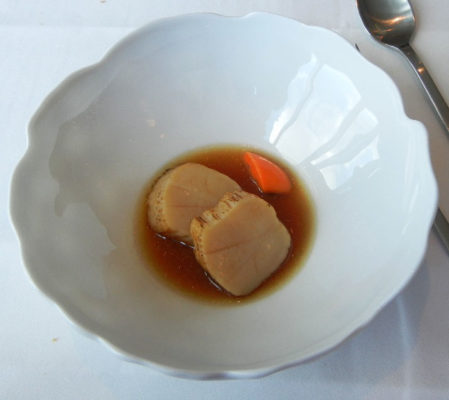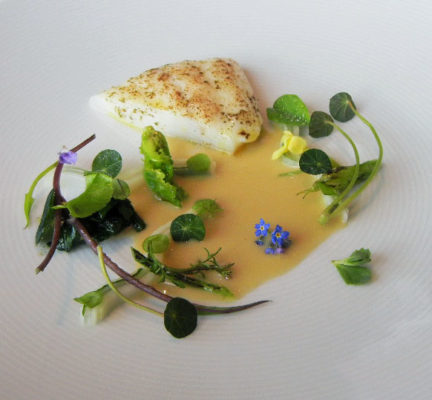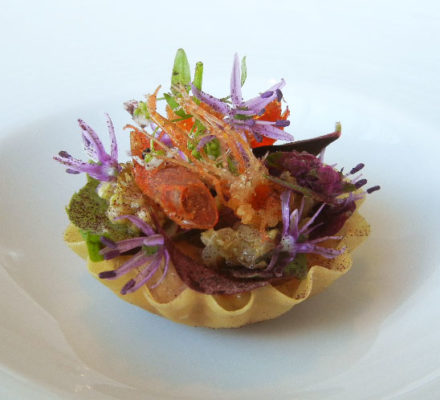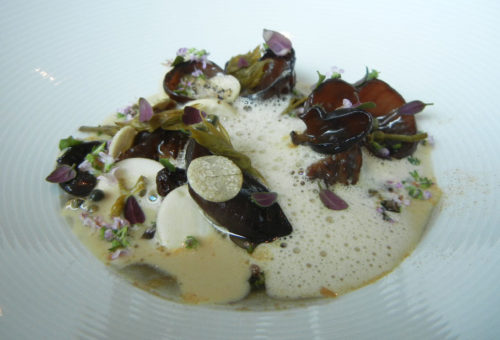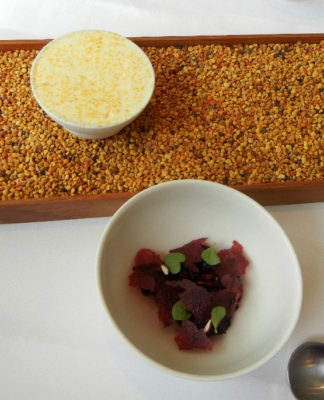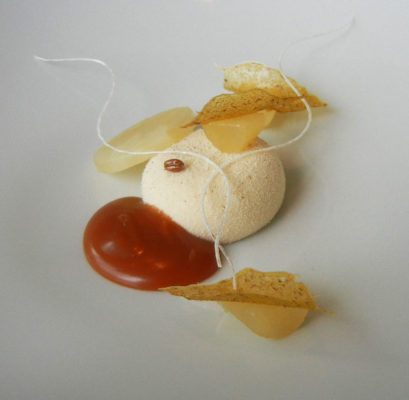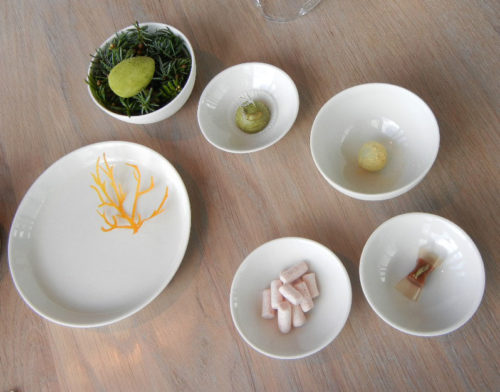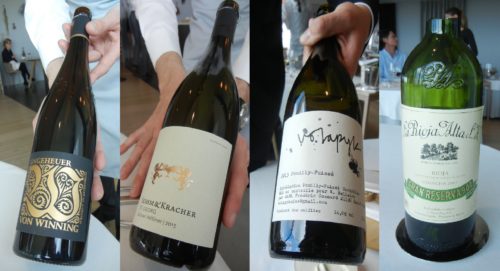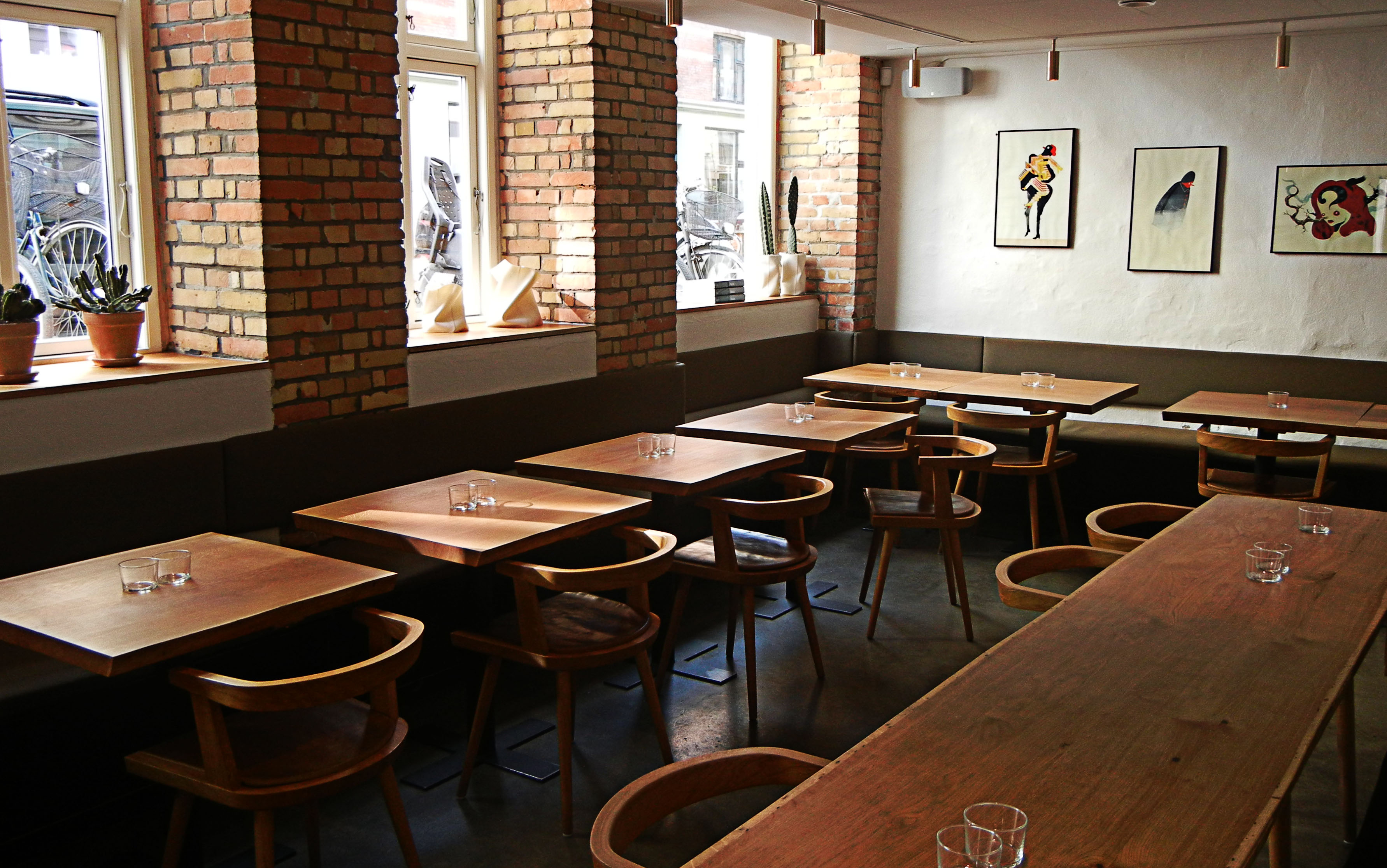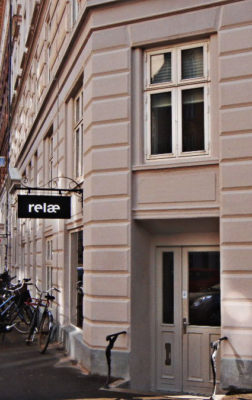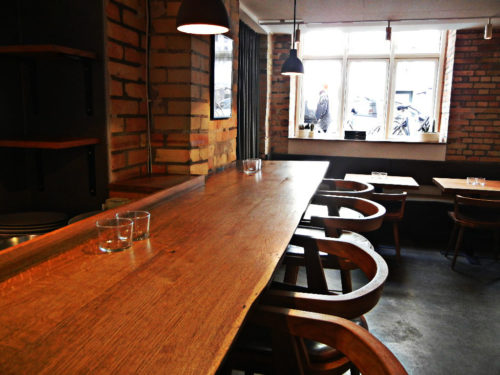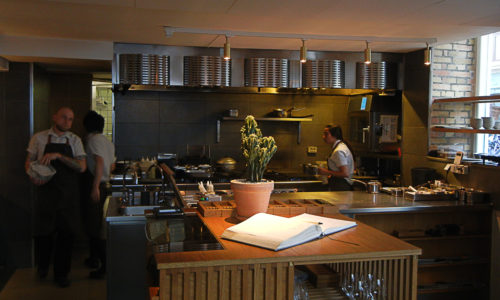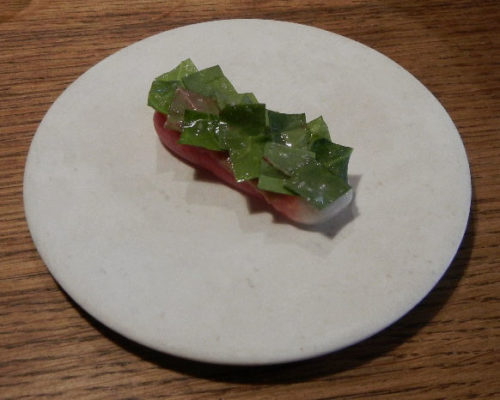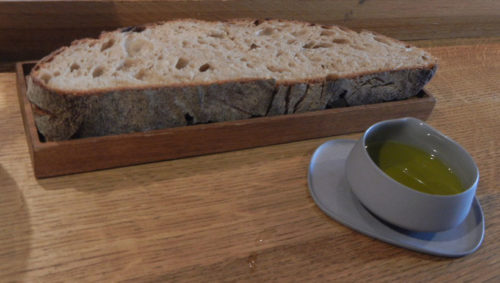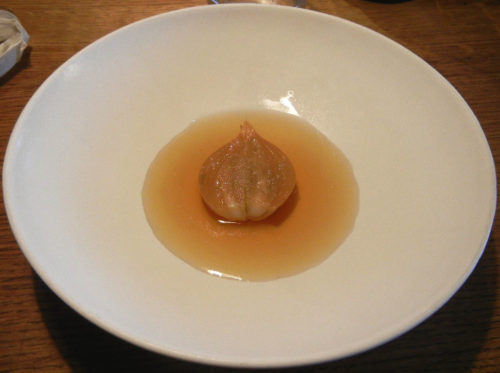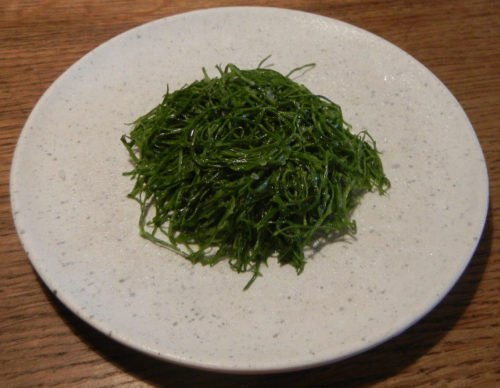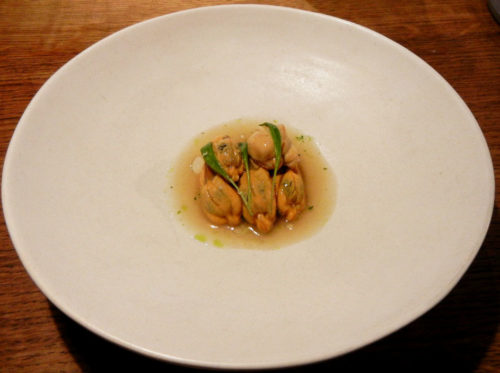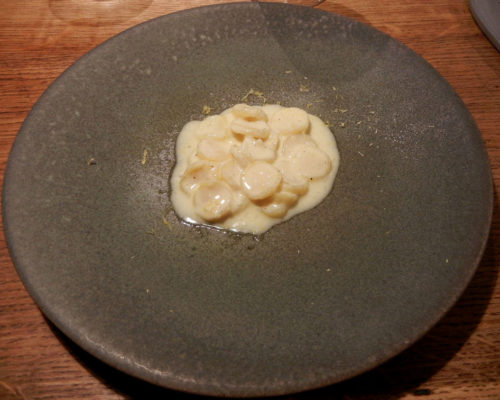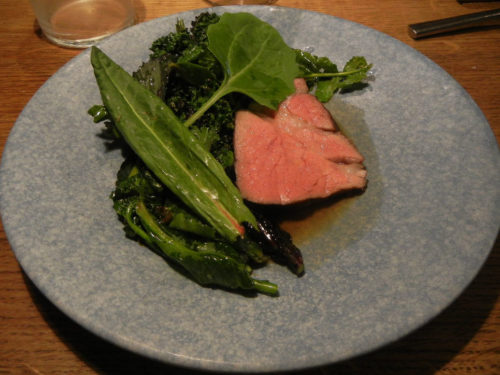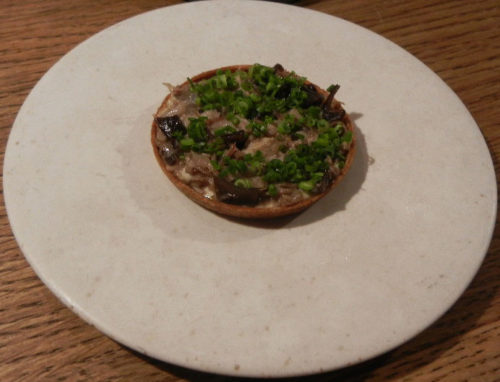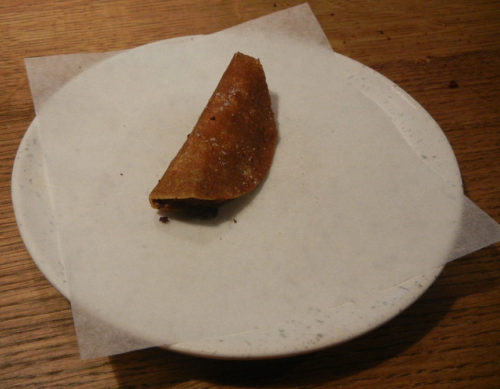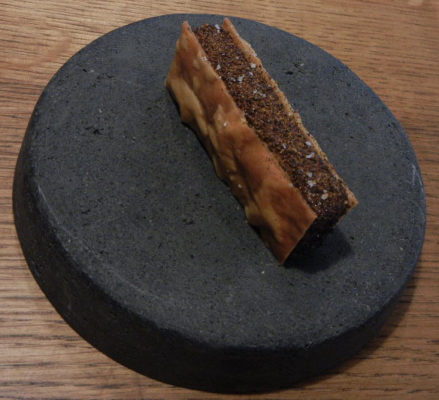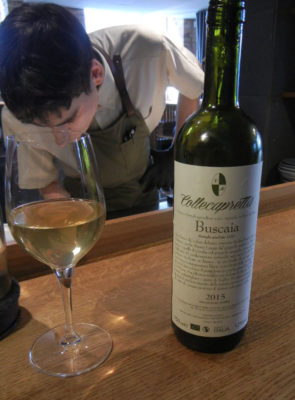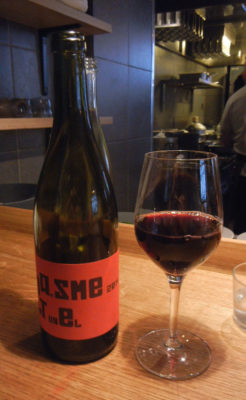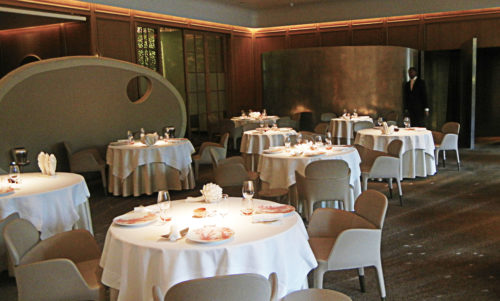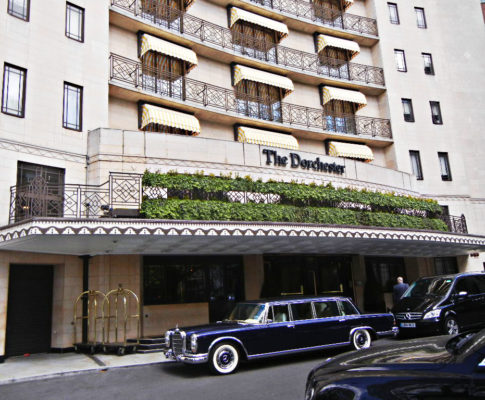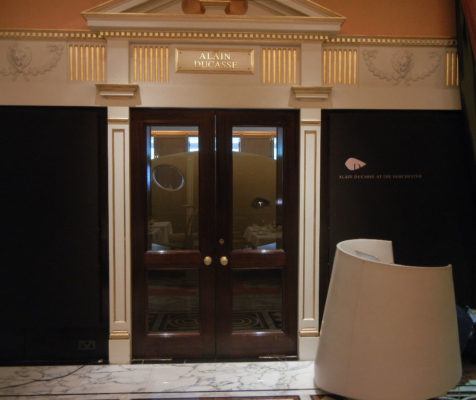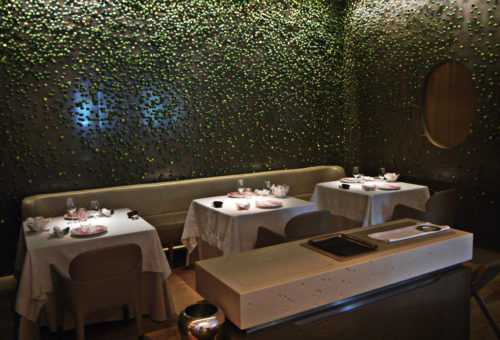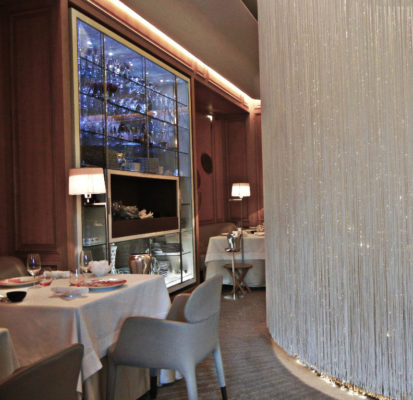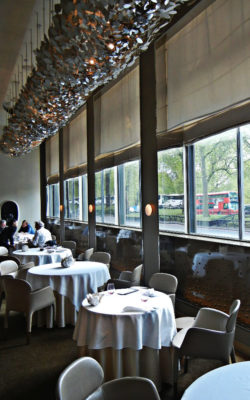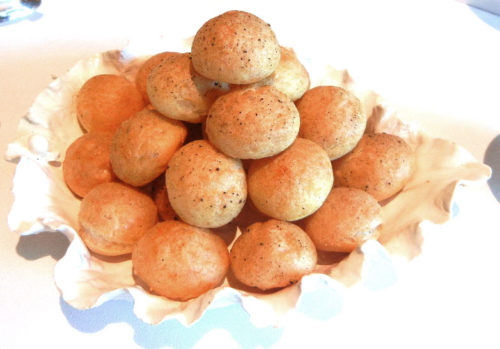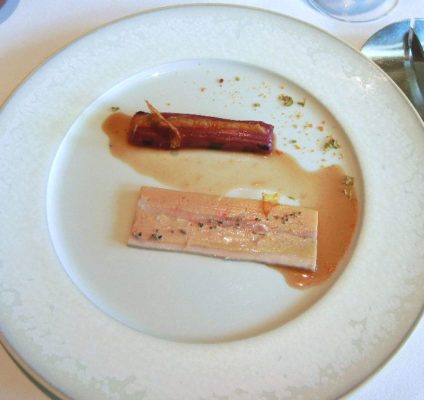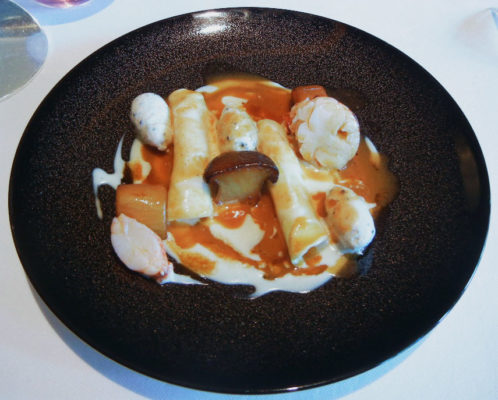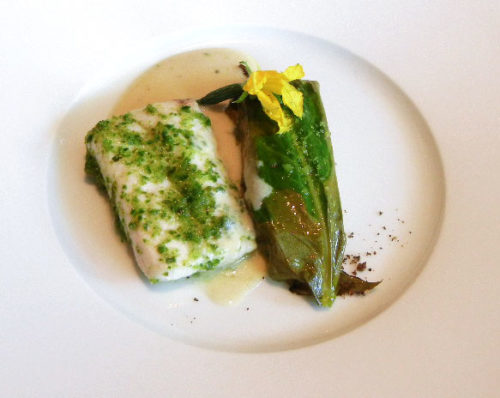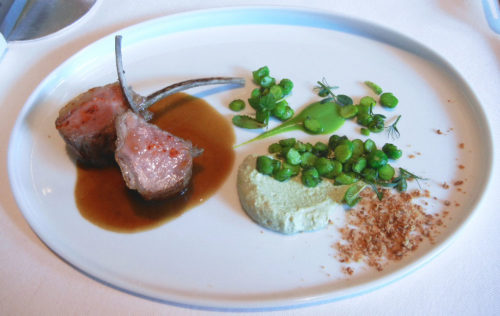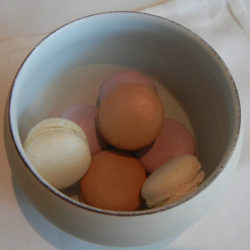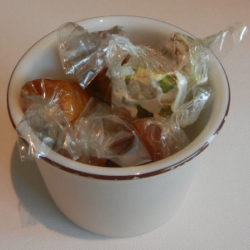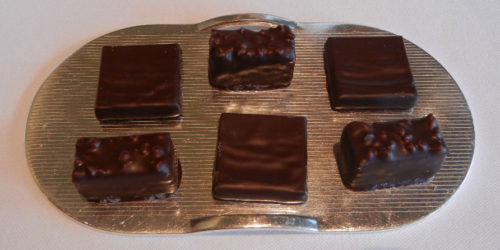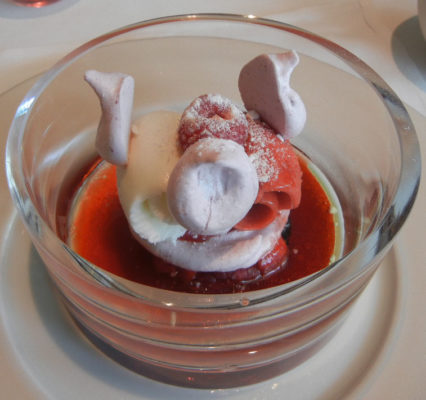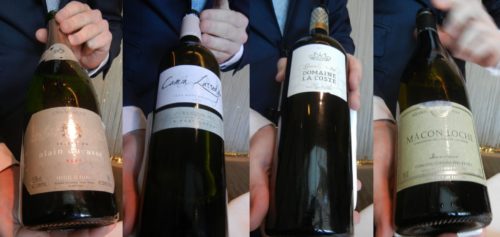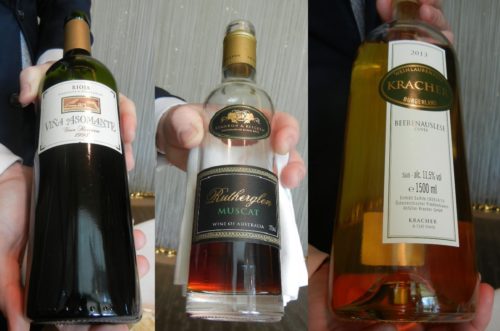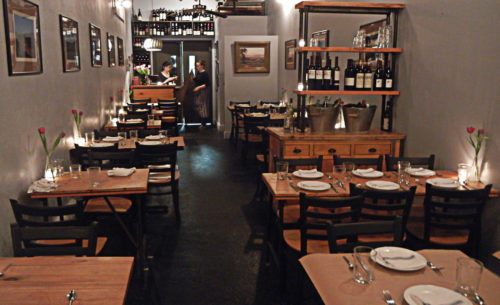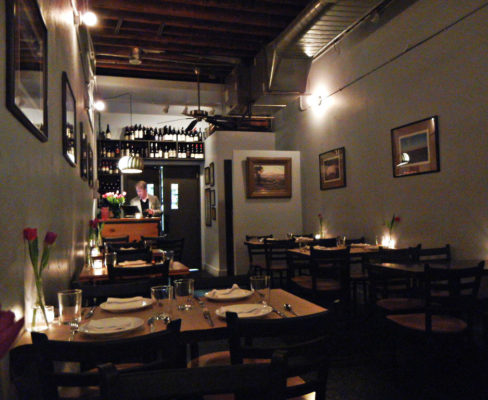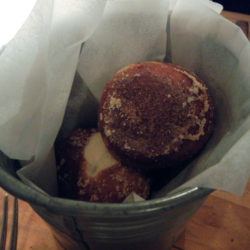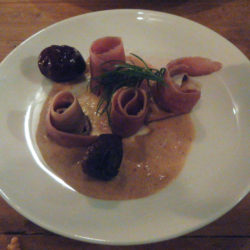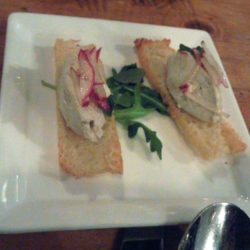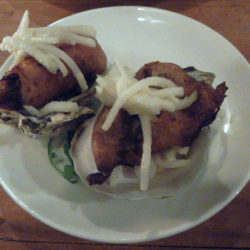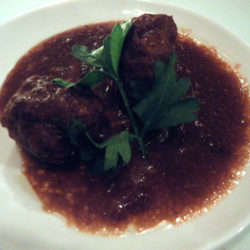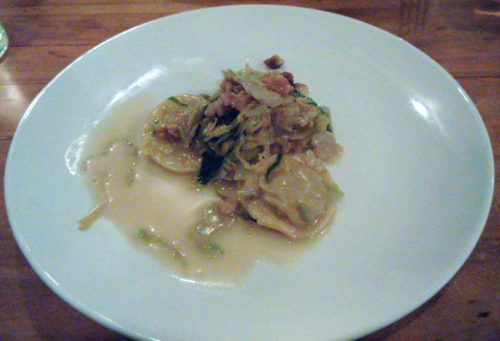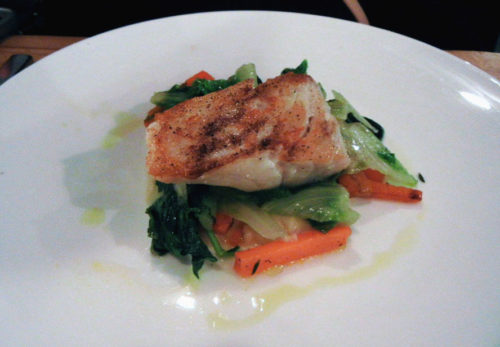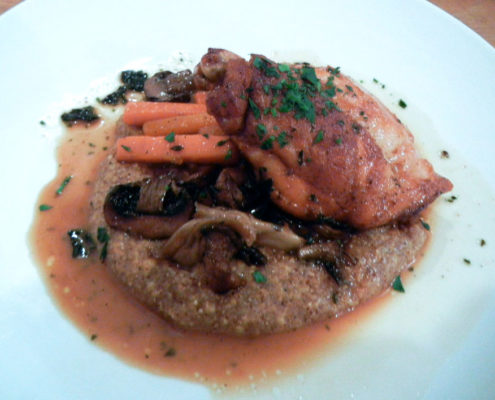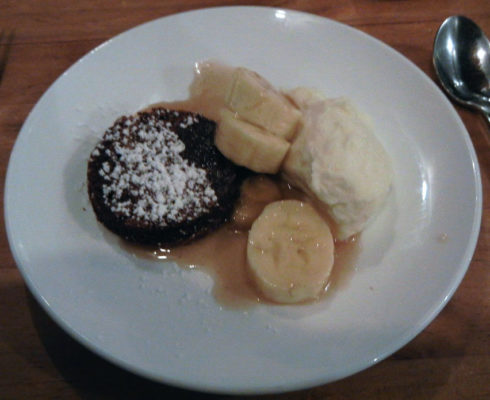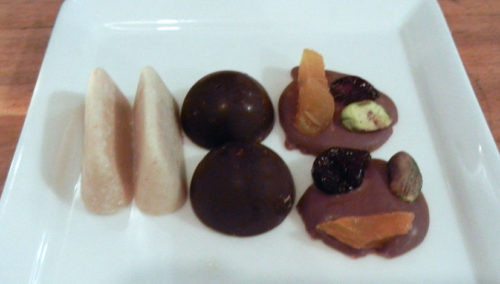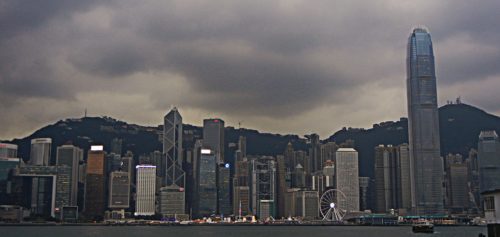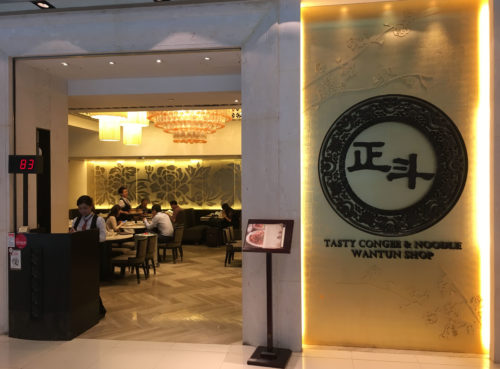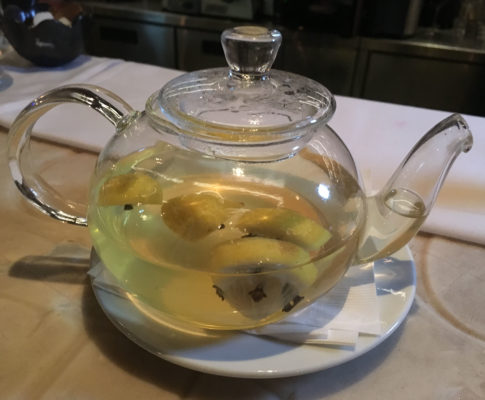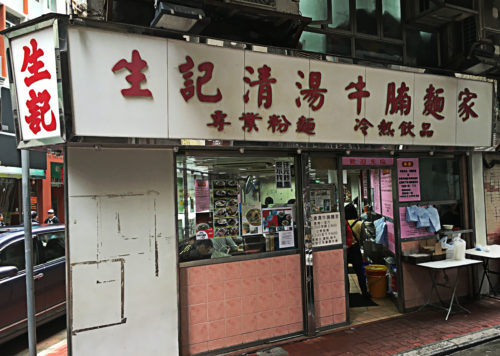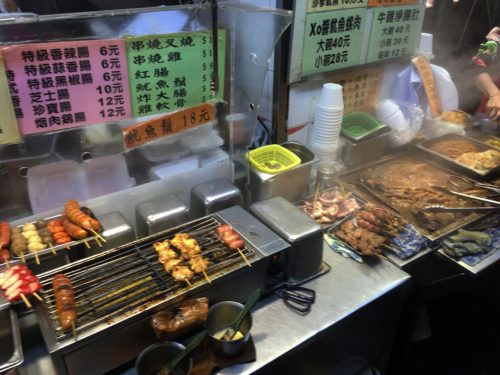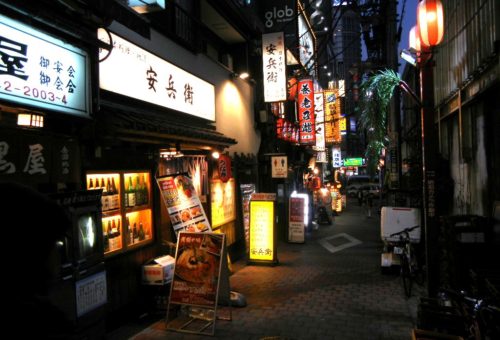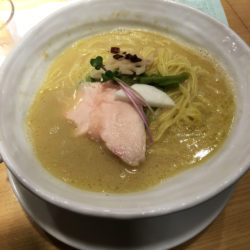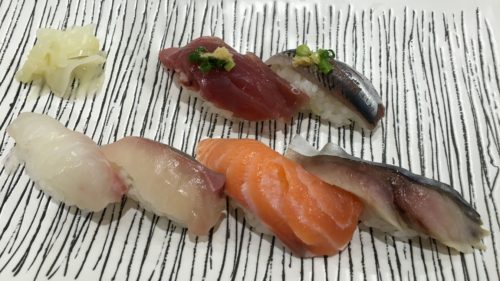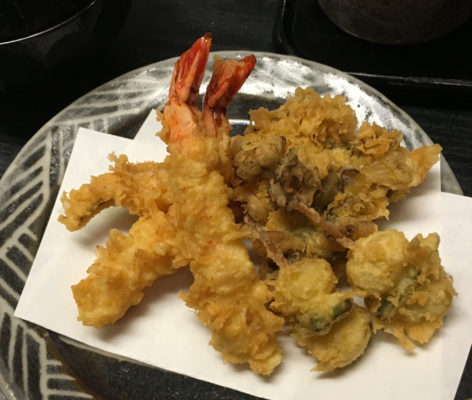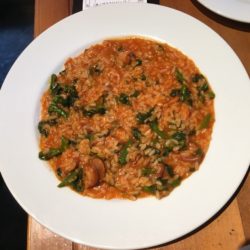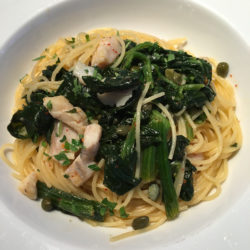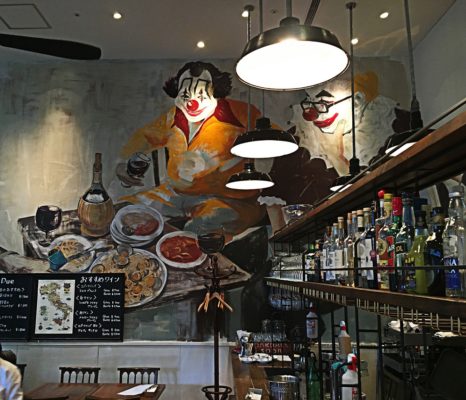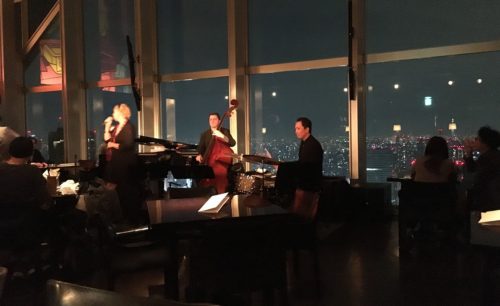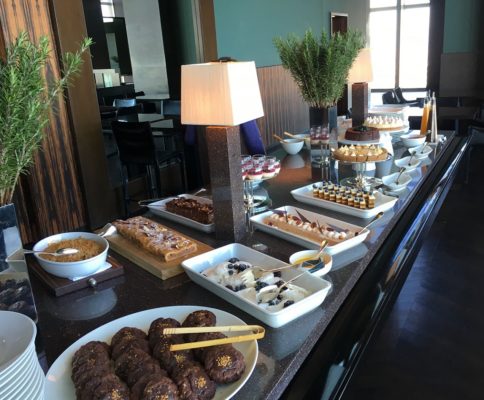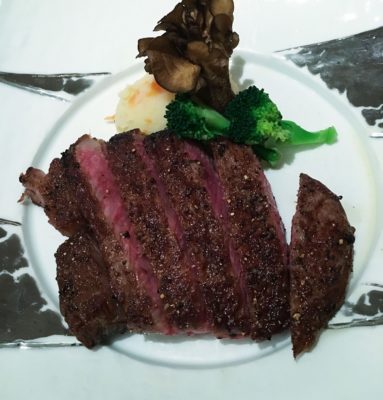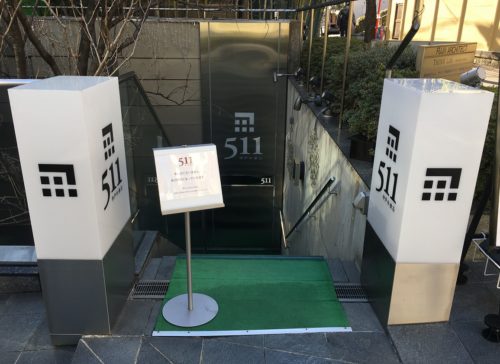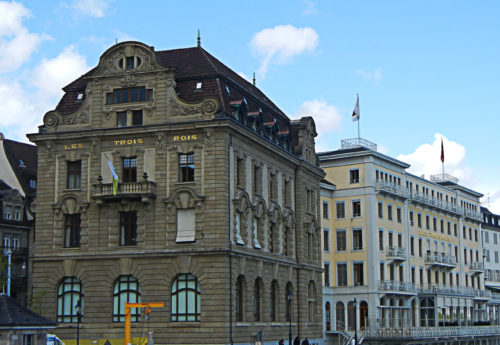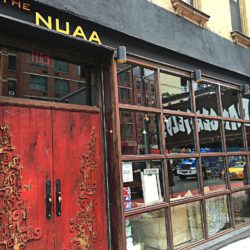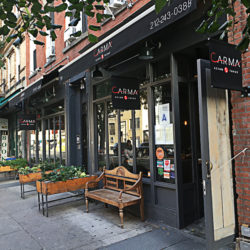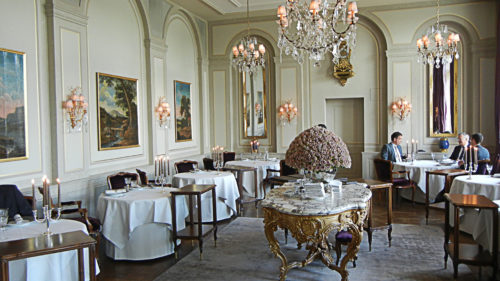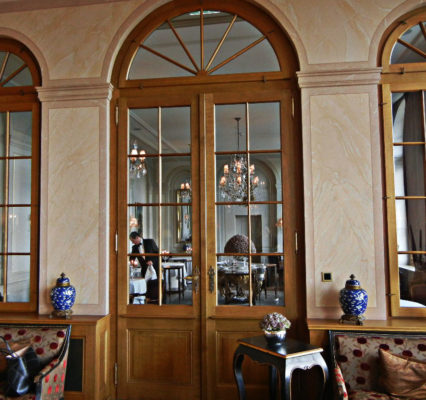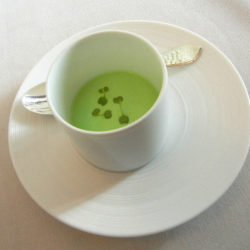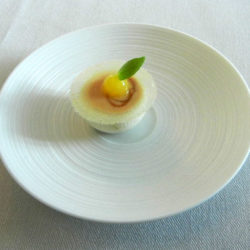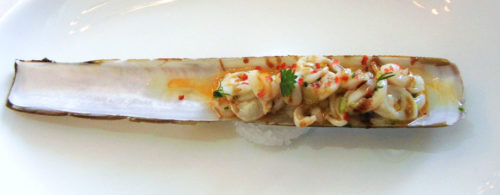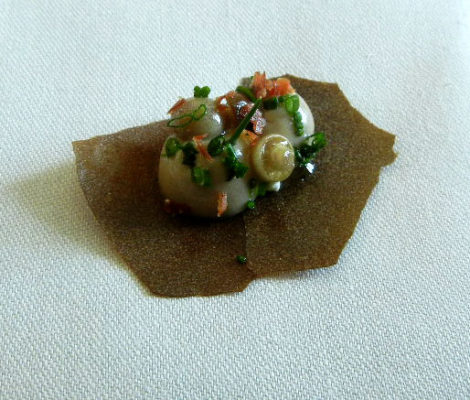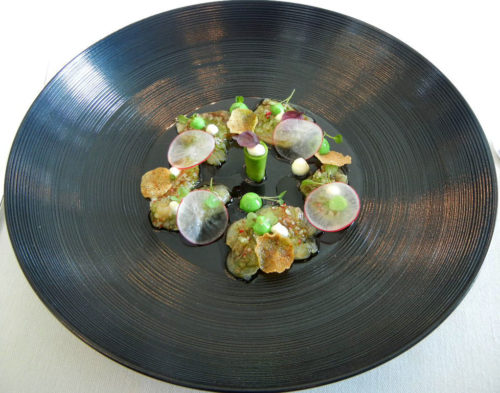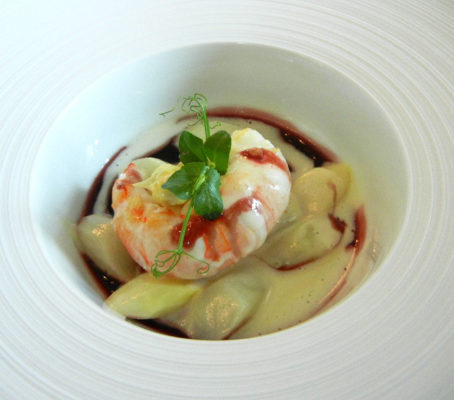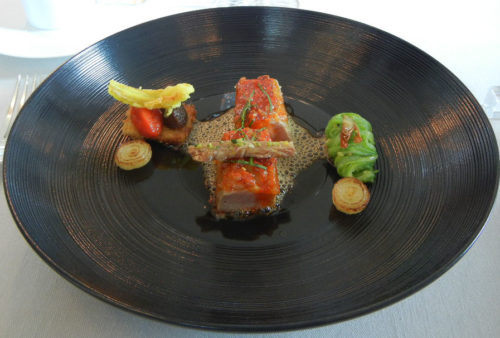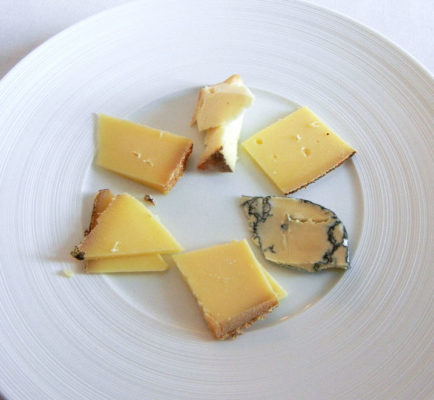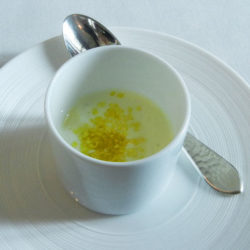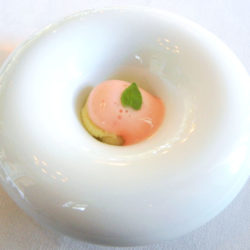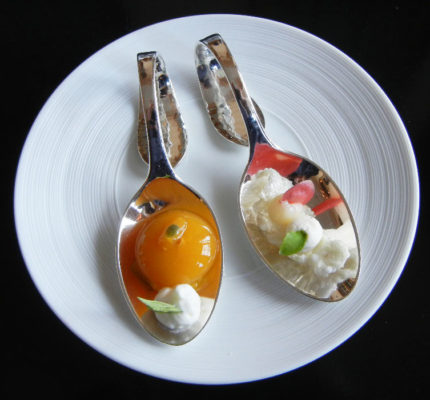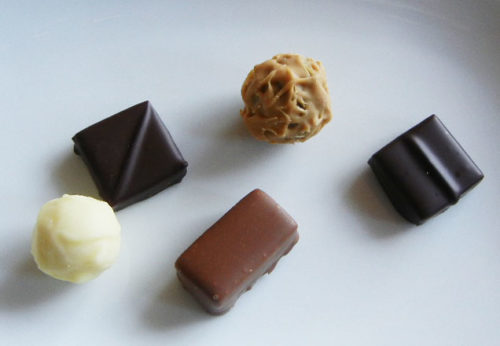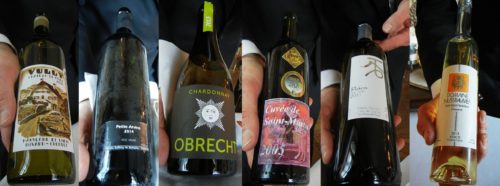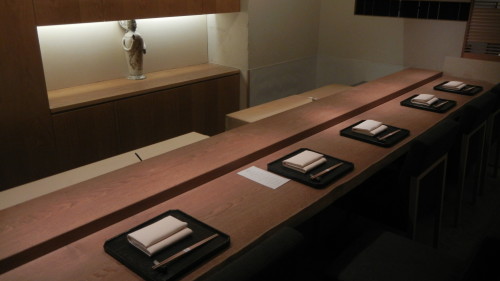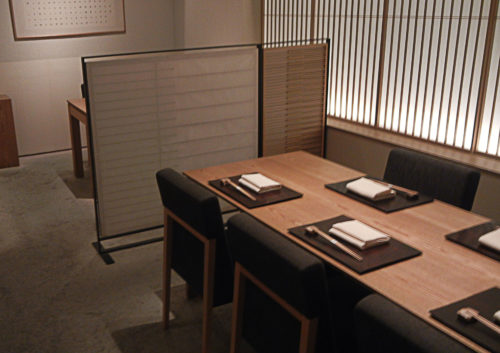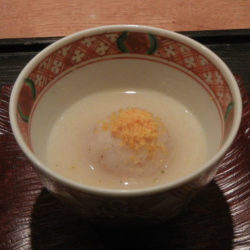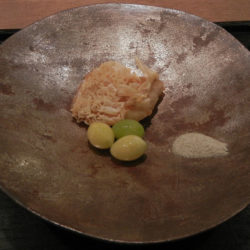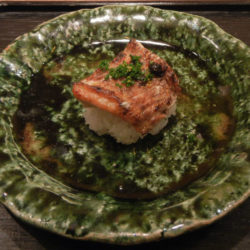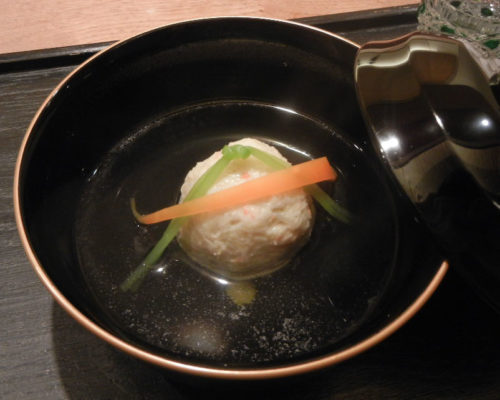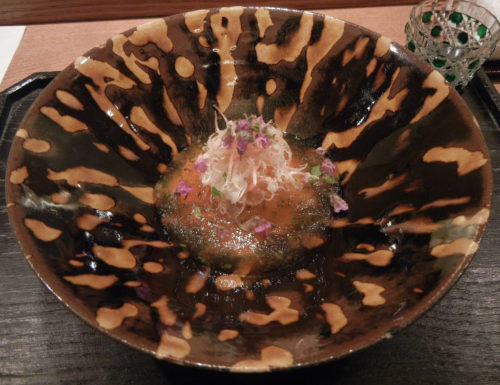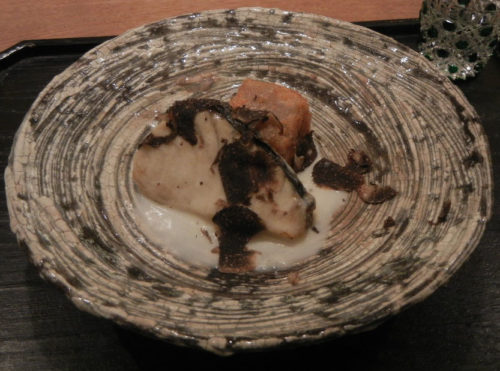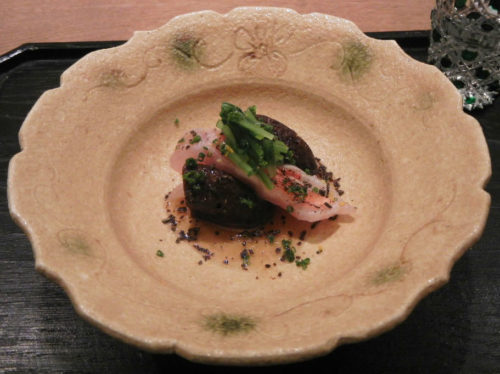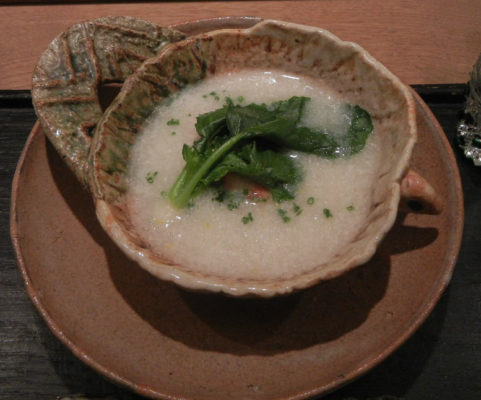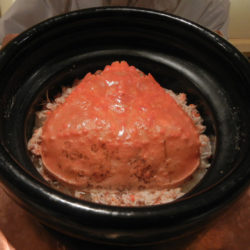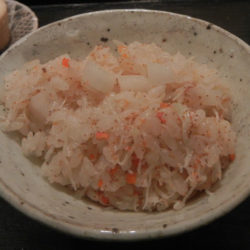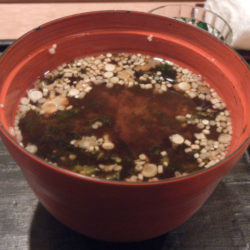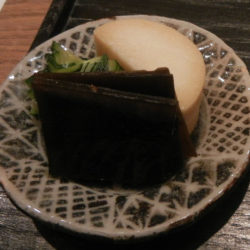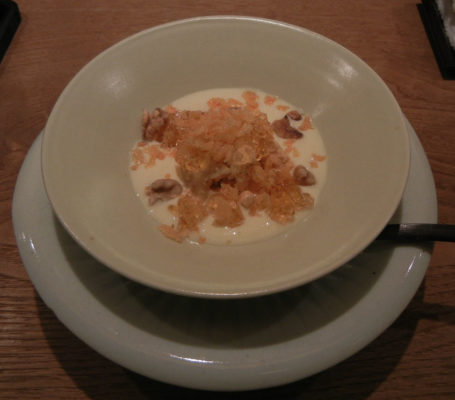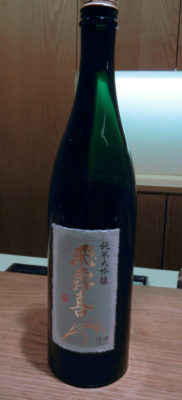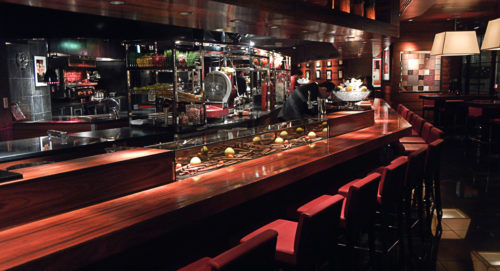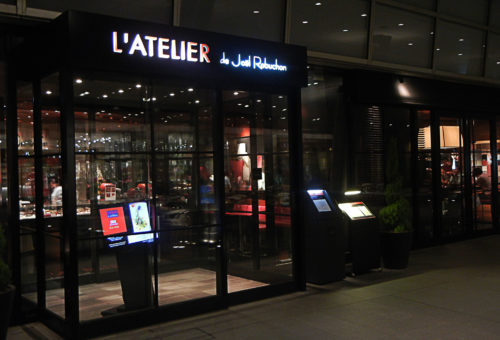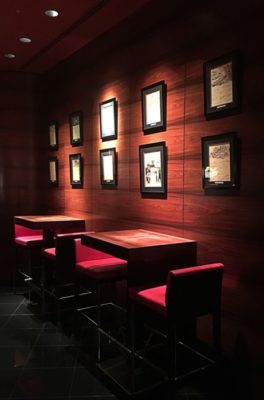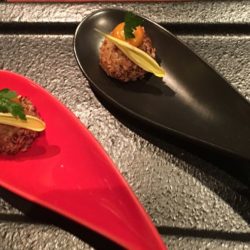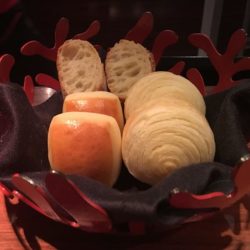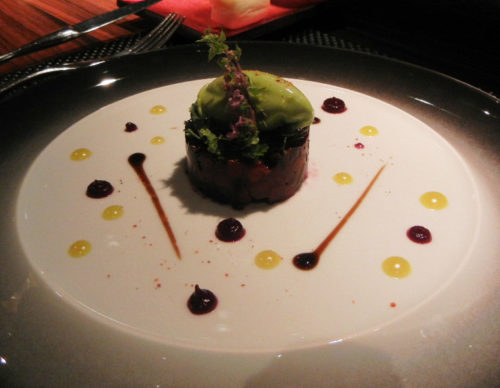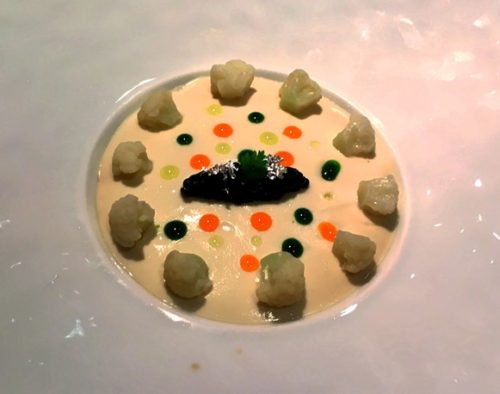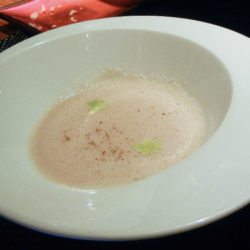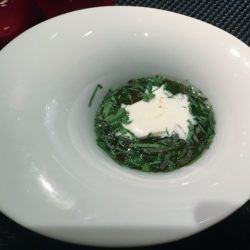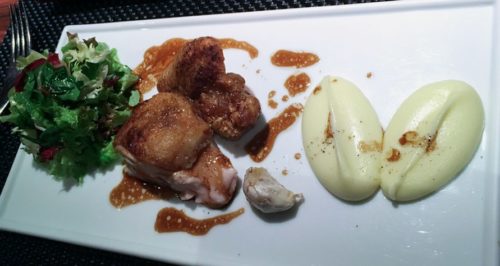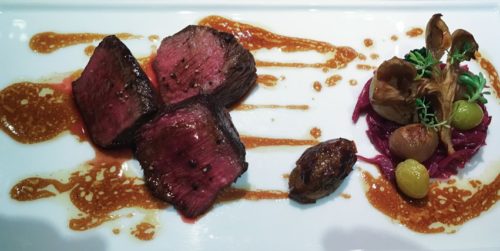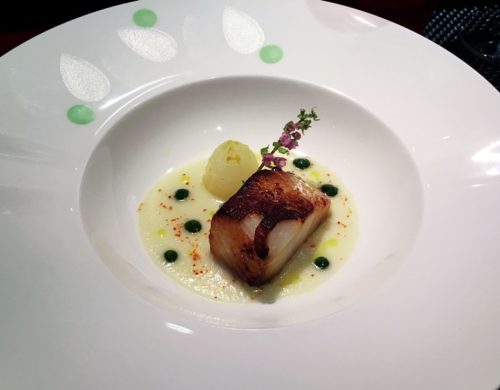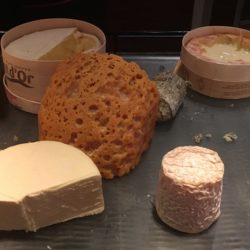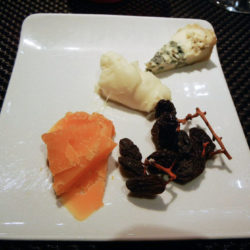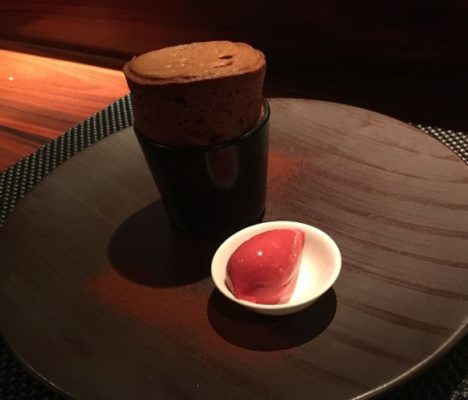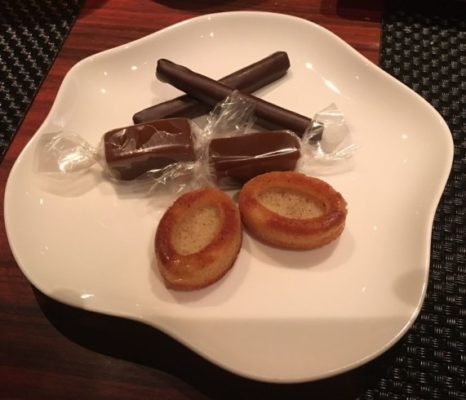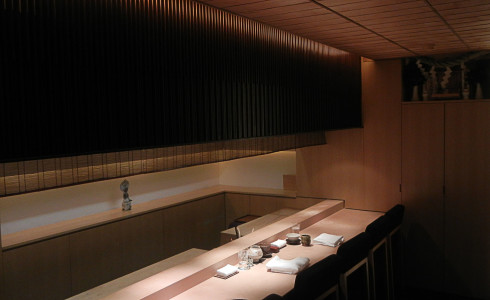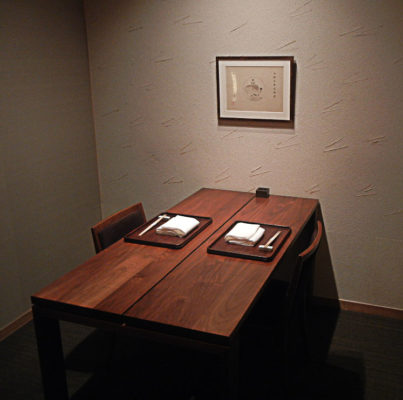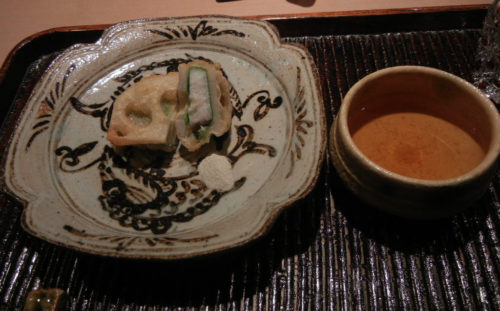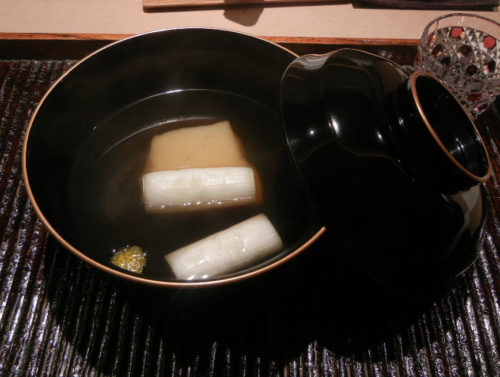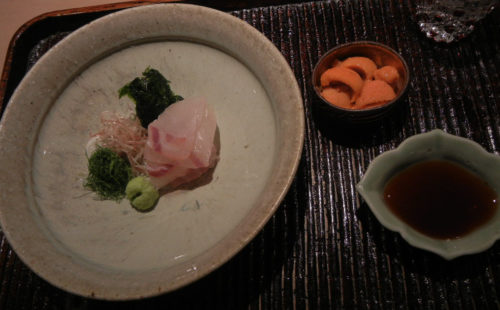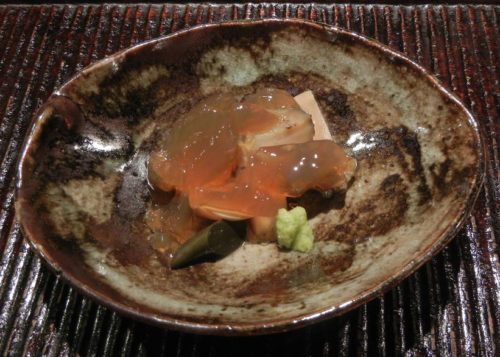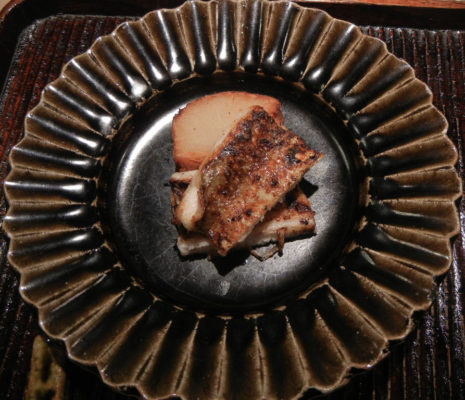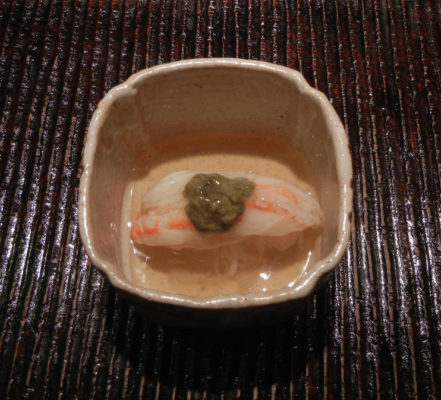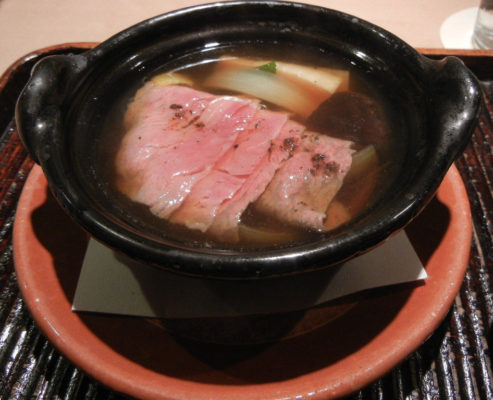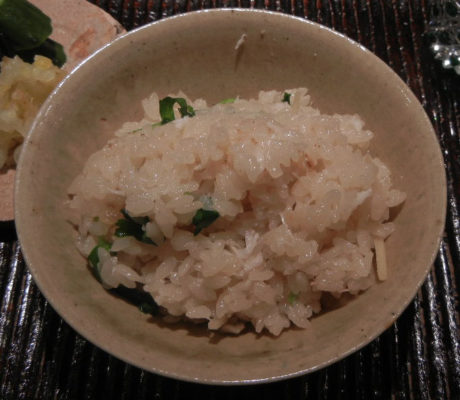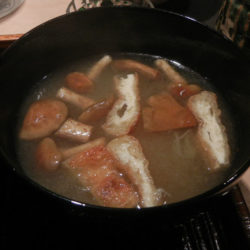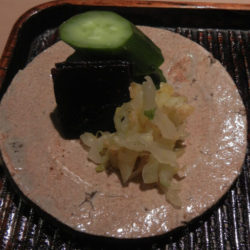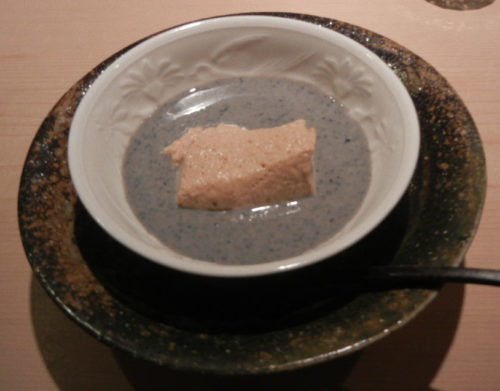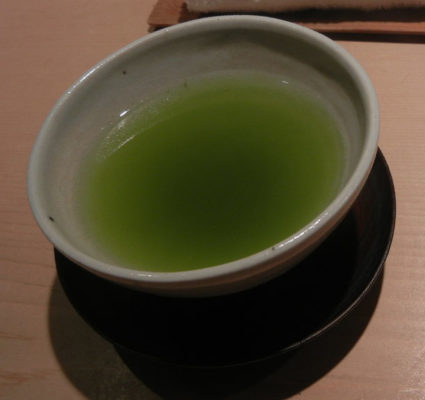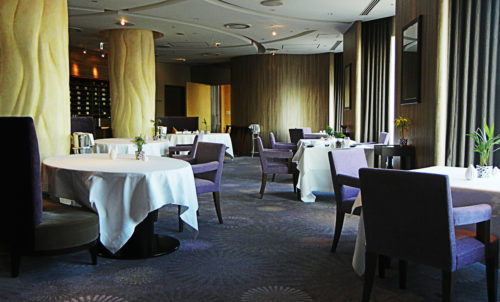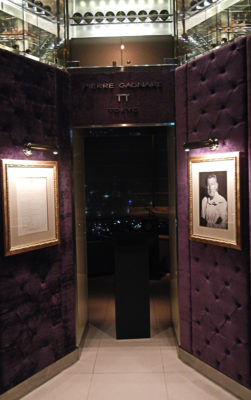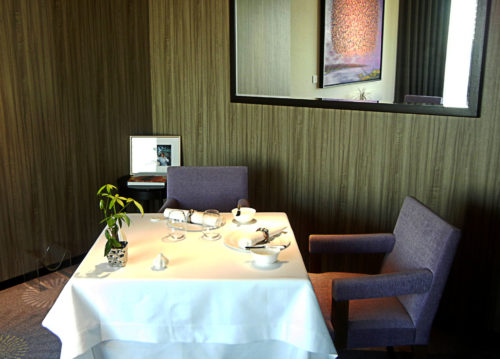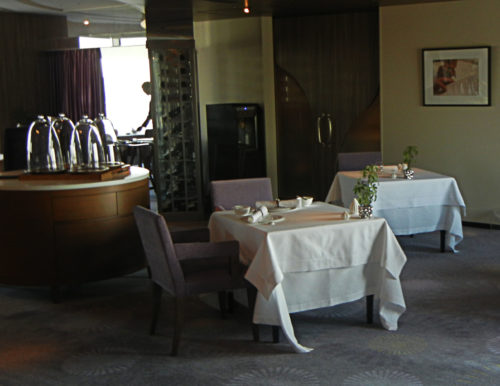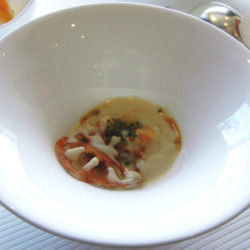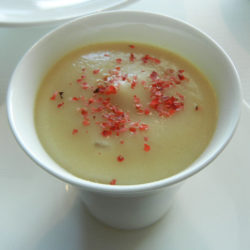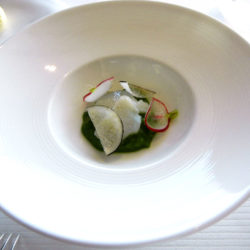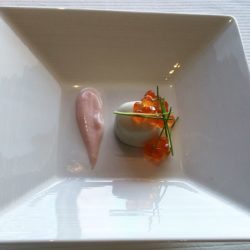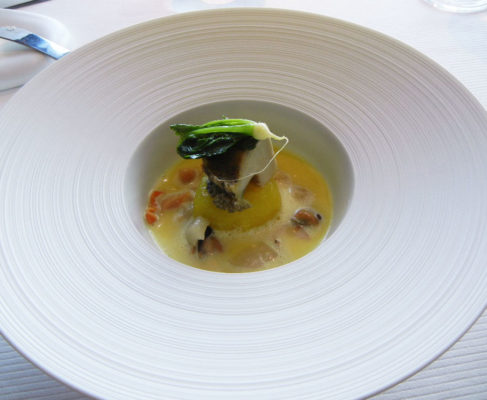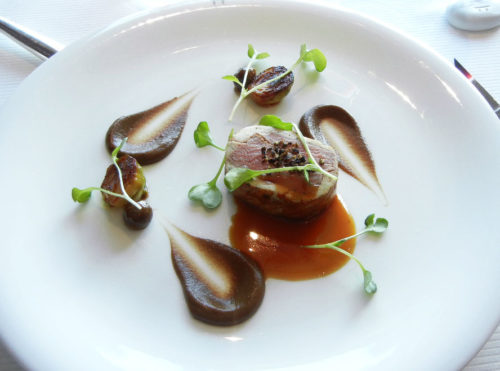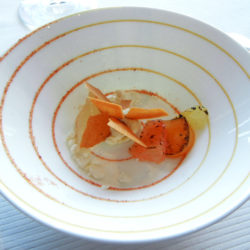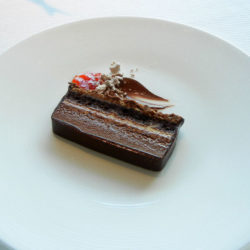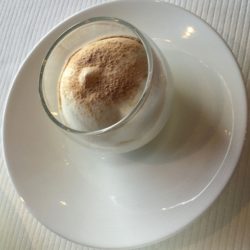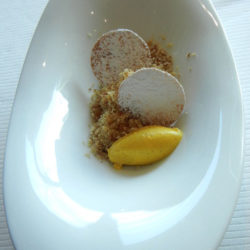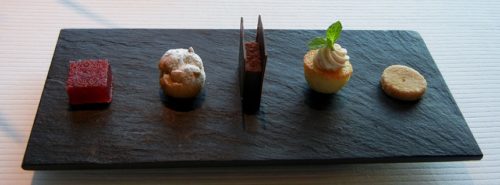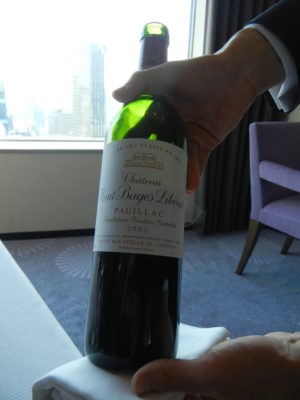Geranium
Per Henrik Lings Allé 4
2100 København Ø, Denmark
+45 69 96 00 20
Website
Denmark’s capital, Copenhagen, is high on the list as the best city to eat on earth. The birthplace of New Nordic cuisine, and home to numerous world celebrated restaurants, also has the highest concentration of Michelin starred places in the region. The city was hailed as the gastronomic capital of Scandinavia. In 2016 when the Michelin guide promoted the restaurant Geranium to three stars, it further solidified the city’s status.
Geranium is the first and only three Michelin-starred restaurant in Denmark. It also claimed the top spot in the Nordic White Guide 2017/18, and currently ranked number 19 on the World’s 50 Best Restaurant list. With all the awards, the path to greatness was challenging for co-owners head chef Rasmus Kofoed, and Soren Ledet, the wine/restaurant director. They opened the restaurant in 2007 and was awarded a Michelin star a year later, but bankruptcy of an investor led to its closure. In 2010, the duo re-opened Geranium at its current location and regained the Michelin star in 2012. The second star came the following year and finally the third star in 2016.
Aside from the Michelin accolades, Chef Kofoed was the only person to win bronze, silver and gold at the prestigious Bocuse d’Or competition (the trophies are proudly displayed in the restaurants lounge area), and was voted Danish Chef of the year in 2003. He is arguably the most decorated chef in Denmark. His culinary career started at Copenhagen’s Hotel D’Angleterre before embarking to Belgium’s two-Michelin starred Scholeshof. After coming back to Denmark Chef Koefed took the reigns at the now closed two Michelin-starred Kommandanten (the first restaurant in Denmark to hold multiple stars), and held various head chef position in the city. His final stop before Geranium was the head chef position of Hotel D’Angleterre. Mr. Ledet on the other hand, was a former chef at noma turned sommelier. He curated Geraniums award-winning wine list that was recognized by Wine Spectator.
The restaurant is housed on the 8th floor of the Tiel Parken stadium, which is also home to FC Copenhagen, the most successful football club in the nation. Geraniums floor to ceiling windows provide a panoramic view of the surrounding area. The interior is stylish and strictly Scandinavian with white and gray color scheme. The open concept dining room is slated with natural wood floorings, neatly dressed oversize round tables, and custom made Danish-designed chairs and benches. There is an open kitchen in the front of the dining room giving diners a theatric aspect and direct view of Chef Koefed and his chefs in action.
A seasonal “Geranium Universe” tasting menu cost 2000 DKK (750 DKK deposit to confirm the reservation) is offered both lunch and dinner, which consist of fifteen plus courses.
To start, I was served a decadent custard of Lobster Milk, Juice from Fermented Carrots & Sea Buckthorn. The custard has layers of sweet, savory, and vinegary essence that comes together in harmony. At the bottom, are delicious pieces of lobster meat. Next, was the Jerusalem Artichoke Leaves, Hazel Nut Oil & Rye Vinegar. A pair of crispy chips shaped like a leaf from Jerusalem artichoke, and served with a tasty mayonnaise dip from hazel nut and rye vinegar. That was followed by the “Razor Clams” with Mineral & Sour Cream. This ingeniously constructed edible razor clam made from wheat and squid ink, was delightfully filled with chopped raw razor clams, sour cream, tarragon and parsley.
Then came the, Tomato Water, Ham Fat and Aromatic Herbs. This was a small cup of tomato water served with a spoon filled with herbs and petals. The tomato water has incredible robust flavors. Mixing the herbs with the tomato water, as instructed by my server, releases the elegant aromatics of the dish. The “Dillstone” Trout, Horse Radish & Frozen Juice from Pickle Dill was a brilliantly conceived dish. Coated in dill and shaped to replicate a stone, the humble trout was elevated, and given a certain refinement. The chilled bitterness of the horse radish with pickle dill was the rightful cohort to the dill stone. The Nettles, Smoked Cheese & Dried Oyster had rich smoky features, as well as having a clear oyster presence.
After six terrific appetizers, it was time to move on to the main dishes. The first course was a seasonal Danish delicacy; Smoked Lumpfish Roe & Fermented Creamy Cauliflower. The subtle lumpfish roe was given a touch of smokiness that went very well with the sharpness of the fermented cauliflower cream. Salted Hake, Parsley Stems & Finnish Caviar in Buttermilk was the second course, and also Geranium’s signature dish. This had delicate flavors that were heightened with the saltiness of the caviar. The buttermilk gave it the perfect hint of creaminess, while the fried fish scales provided the crunchy textures. Next was an enjoyable bread course of Crispy Grains, Bread with Old Grains & Gluten Free Bread with Seeds. Two types of bread and cheese sticks served with homemade butter.
The meal continued with the Scallop in Juniper Aroma, Flippa Reduction & Browned Butter. Prepared table side by Chef Koefed himself, the scrumptious scallop marine’s sweetness was magnificently lifted by the broth’s nuttiness. Lightly Salted Turbot, Green Herbs, Celeriac & Pickel Pine was a tender piece of mildly seasoned fish with a nicely seared outer layer. In harmony with the turbot was the pleasant tartness of the celeriac sauce. The vibrant herbs and its vegetal essence balanced all the component on the plate. The following course was Tartlet with Fjord Shrimp, Sol & Pickled Elder Flowers, a tart filled with crispy shrimps, herbs and flowers comes with very good flavors. The final main course was the Stuffed Morels, Wild Mushrooms, Smoked Chicken Fat & Hops. The profound earthiness of the mushrooms and morels were combined exquisitely with savory lushness from the consommé of smoke chicken fat.
Prior to dessert I was given a tour of the restaurant. We started in the lounge area, which was separated by a marble center island table with an enclosed fire place, before proceeding to their wine storage. We continued to their private dining area, where we sampled in-house cured meats. I made my way to the back kitchen that looks down on the football pitch, before exiting to the dining room.
Back to my table, dessert began with A Bite of Beetroot, Blackcurrant, Yoghurt & Tagetes; a tiny ball caramelized in beets had a soothing sweetness while also having a lingering liquorish sourness. Served in pair, were the Ice Cream from Beeswax & Pollen, Dried Apples and Elderberries. The ice cream had a beautiful refreshing natural sweetness, while the bowl with dried apples and elderberries had a pleasing fruity dulcet. For the final dessert, I was served the Caramel With Roasted Grains, Chamomile & Pear. On the plate was a rich puffy mousse sweetened by caramel syrup, which was fittingly accompanied by grainy sweetness of the pear.
I opted to have the mignardises at the lounge where I was served Pumpkin Tree & Cake With Pumpkin Seed Oil, Caramel, Dried Plum Juice & Aromatic Seeds, Chocolate with Oats & Sea Buckthorn, Marshmallow with Rose Hip and Green Egg with Pine. I had these confectionary delights with a cup of fresh Danish latte, carefully brewed in-front of me.
After fifteen or so courses and four hours later, the culinary marathon was sadly came to an end. This was an amazing meal that had plenty of unique and intricate flavor combinations, with different textures. One course after another continued to excite the palate while also appealing visually. The cooking focused and precise down to the very smallest details, and the use of local seasonal ingredients was remarkable. Chef Kofoed’s repertoire that won him numerous culinary accolades, and made him one of the top toques in the world was on display on my visit.
As with any place in Copenhagen wine marked up is ridiculously out of this world. It was no different at Geranium where the wine pairing cost 1500 DKK ($210). While there was a cheaper juice pairing, the restaurant was happy to accommodate my request of a mixture of wines and juice pairing for a lesser value at 1000 DKK. Having the best of both options, the juice pairing of Green Apples &Elderflower, Gooseberries, Sunflower Seeds & Tarragon and Cloudberry were creative and fascinating, especially with how their sweetness complemented the food properly. The same can be said with the four glasses of European wines as it adds an extra after taste.
The service was sincerely friendly and particularly attentive. Though the manner of professionalism were still on display they were still able to make it fun. I was thoroughly impressed with the young and diverse staff on how well trained they were. Everyone that brought the food to my table, from the hostess to the chefs, and wait staff were equally knowledgeable, and very much involved in providing a dining experience. As with Chef Koefed, his presence in the dining room was very much noticeable. He served, performed table side preparation, and interacted with his guests, stopping by every table every so often.
Wine Pairing:
A meal at Geranium is costly but well worth the price of admission. There is no better restaurant in Copenhagen. For years it has lived in the shadow of noma but since its closure and the arrival of the third Michelin star, Geranium has undisputedly become the top dining venue in Copenhagen.
While three Michelin stars are the highest accolades that a restaurant can achieve, not all with this honor is equally in the same caliber. Geranium, on the other hand is the Creme de la Creme of these select group and rightfully one of the very best in the world. Dining at this restaurant was epic and unforgettable and will forever be etched in memory. This was New Nordic cuisine at its finest.

